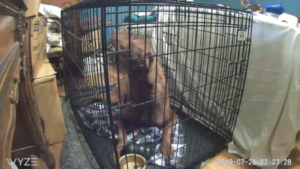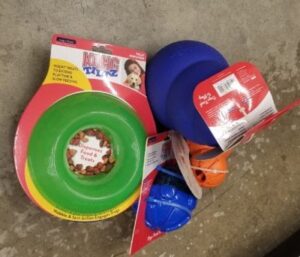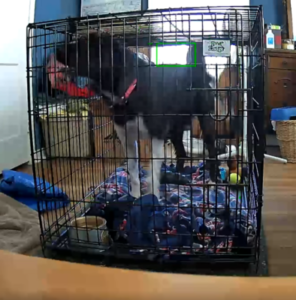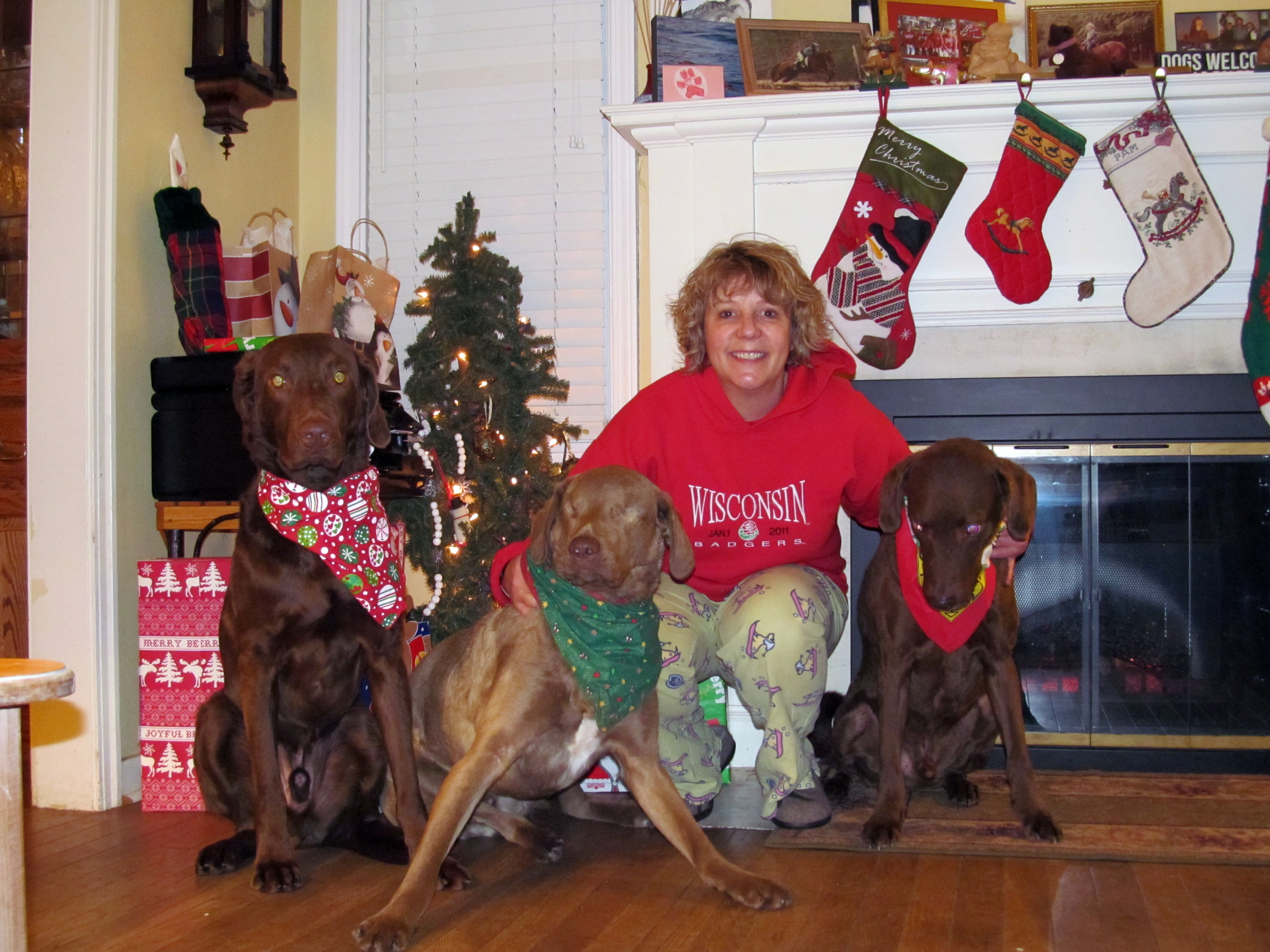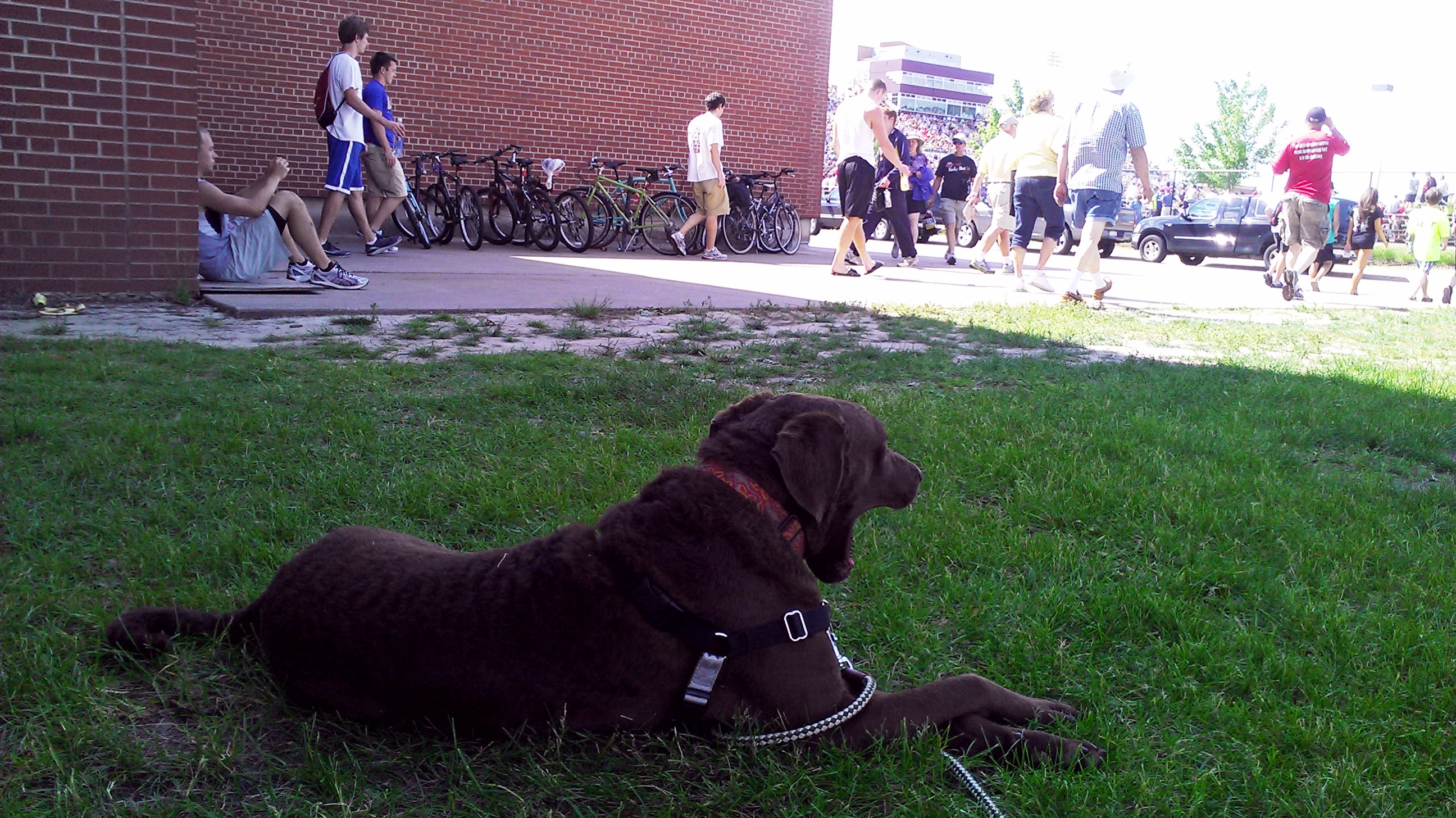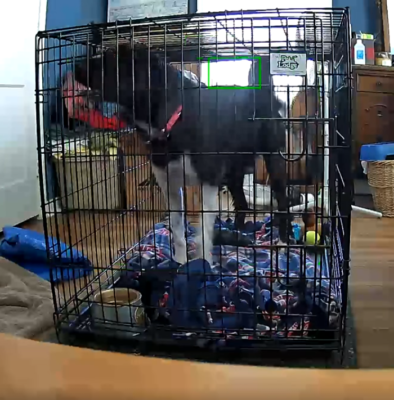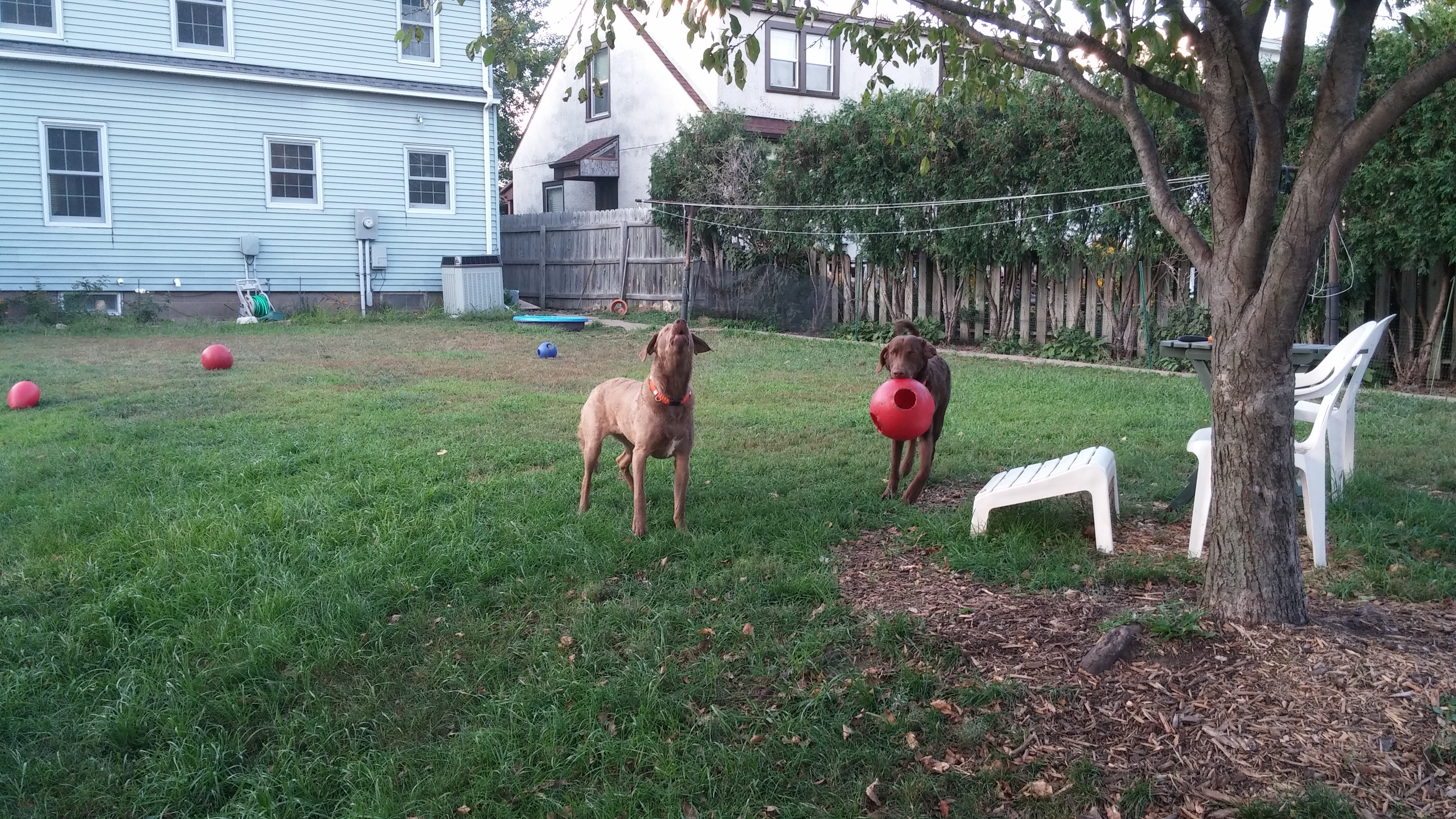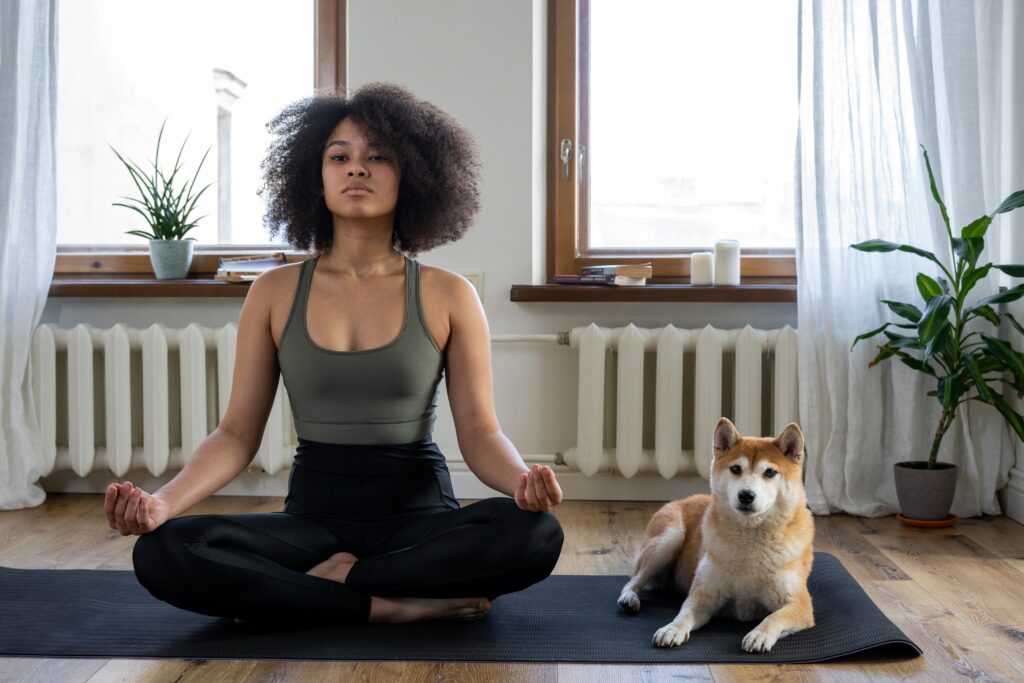
Separation anxiety dog training can be incredibly difficult. While separation anxiety is awful for your dog, it’s no fun to be the owner either–your pup may become destructive and go to the bathroom inside, but nothing’s worse than seeing your best friend sad and in pain!
However, taking the time to train your dog for improved separation anxiety now will give them the opportunity to have a much happier, healthier lifestyle—and you won’t need to feel bad about leaving your pup at home ever again.
By the end of this separation anxiety dog training guide, you’ll know how to assess your dog’s anxiety severity, the best toys for training a dog with separation anxiety, the best music for anxious dogs (Bob Marley, anyone?), and how to crate train a dog with separation anxiety.
Evaluating Your Dog’s Separation Anxiety Symptoms and Severity
Our goal is to alleviate the dog’s underlying anxiety by giving him the tools to tolerate, or even enjoy, time alone.
First, the most important step is to monitor your dog’s behavior as they experience an episode. Then, you can determine the severity of the anxiety, understand more about why your dog may be reacting this way, and have footage to show your veterinarian to decide whether medicine will be a helpful tool for your pup’s recovery.
Recording Your Dog’s Separation Anxiety Symptoms
Step one? Camera setup!
Get an indoor WiFi camera so you can watch your dog from your smartphone or laptop. Set your camera up in the room with your dog and then go outside to watch your dog’s behavior during an anxiety episode. This may be difficult to watch, but you’ll feel so much better knowing you can work towards ending these episodes thanks to this research.
Here are some questions to ask yourself:
- How severe is the anxiety? Scale of 1 (a calm, sleepy, happy pup) to 10 (throwing body at barrier, barking loudly, drooling and panting hysterically)
- Will my dog hurt himself or my property? How intense is this destructive behavior?
- How long does the behavior last? Less than 5 minutes? Or do the episodes stretch on for hours?
The next step is to evaluate the footage to determine how you can best help your anxious dog.
- If your dog rated as a 5 or lower on the anxiety scale and the episode lasted for fewer than 30 minutes, consider toys and/or crate training, outlined in the sections below.
- If your dog rated as a 6 or higher and their episode lasted for 30 minutes or longer, I highly suggest contacting your veterinarian for their opinion before trying any of the techniques in this article. It’s likely that your dog will need some sort of supplement or medication to help with their condition.
How to Train Your Dog With Separation Anxiety
Now that you understand the severity of your dog’s separation anxiety, we can begin to treat your pup so he or she can have the best life possible! In this section, we’ll discuss toys, calming music, and crate training a dog, all tailored to your dog with separation anxiety.
-
Separation Anxiety Toys for Dogs
Many people with anxiety benefit from sensory toys—so think of these toys as fidget spinners for your dog! They’re a great place to start if your pup has manageable separation anxiety. Plus, I don’t know about you, but I love finding new toys that my dogs love—especially when there’s a shopping spree involved.
KONG Dog Toys:
The original KONG dog toy is an invaluable tool for managing your pup’s separation anxiety. The toy is several toys in one: a chew toy, a puzzle, a fetch toy, a treat holder, and more.
The goal here is to keep your dog’s mouth stimulated, so he feels less inclined to chew through your back door, and to keep his mind stimulated, so he feels entertained and engaged (read: not bored!). When stuffed with treats and frozen, it can also slowly dispense tasty food and keep your pup happy and relaxed.
The KONG company also has a huge selection of other interactive toys for you and your dog to choose from. Some of my favorites are the Wobbler, Tiltz, and Rewards toys.
More Interactive Dog Toy Options:
While KONG is among the most popular brands, there are many more toys to choose from! The most important thing is to look for toys from a reputable company, and toys that are durable and safe, so you feel confident leaving your pup home alone with them.
Another store I recommend is PetSafe, especially their Busy Buddy Kibble Nibble and Barnacle toys.
-
Calming Music for Dogs with Anxiety
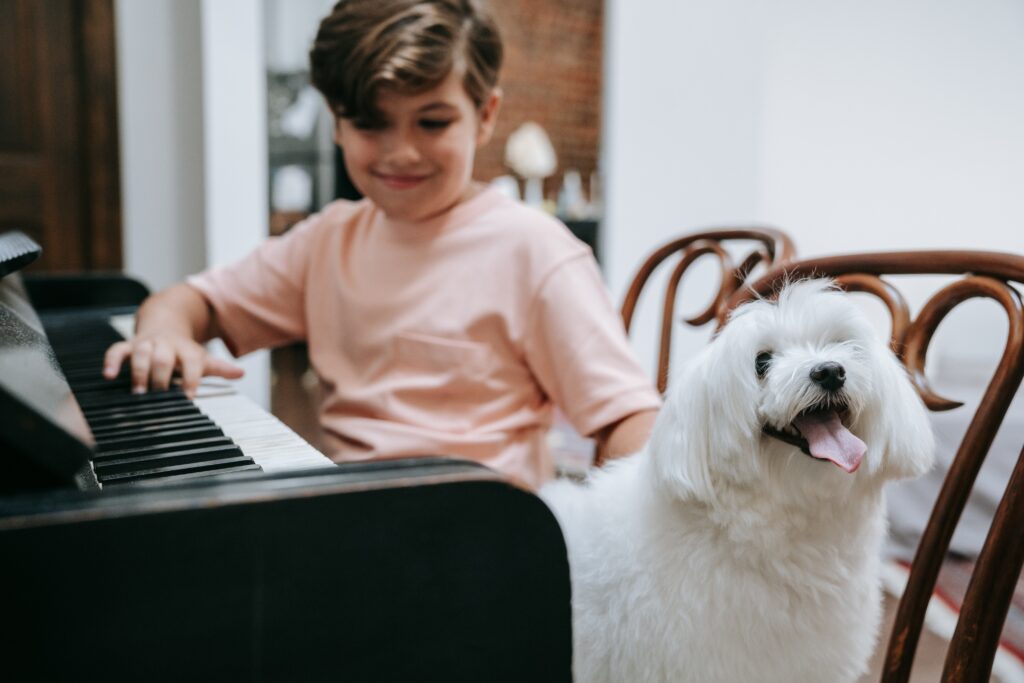
Is there a song you listen to that makes you feel better? Then get this: dogs love music too! Yes, really!
And here’s a fun fact: your pup is probably a big fan of Bob Marley.
According to a study done by the Scottish SPCA and the University of Glasgow, classical music can help calm your dog—but the music may feel boring, or even grating, after too many days of listening.
Meanwhile, the study found that playing reggae or soft rock are the best music genres for consistently calming a stressed dog, minimizing barking, and calming a dog’s heart rate.
Researchers have hypothesized that the reason for this is because the beat and tempo of reggae and soft rock mimic the same rhythm of a dog’s heart rate. Therefore, it leads a dog back to lying against its mother as a puppy, feeling completely calm and safe.
Here are some great music options to calm your dog with separation anxiety:
- RelaxMyDog (YouTube)
- Through a Dog’s Ear (Spotify) (And yes, they DO have a dog reggae album!)
- Canine Lullabies (Amazon Music)
-
Crate Training a Dog With Separation Anxiety
Sometimes, the best way to make your dog feel secure is to give him his own space and giving your dog a comfy crate may be a great solution for both of you.
Now, maybe you’re wondering: isn’t that mean? Don’t worry, I used to think the same thing! The problem is that we have different perceptions of space than dogs. What feels claustrophobic to you may feel like a safe haven to your pup.
For more information on the “why,” check out the AKC’s article on why dogs can actually love having a crate.
Here are some tips for crate training a dog with separation anxiety:
- Your scent is calming to your dog, so putting a “used” piece of clothing in the crate with them may make them feel more relaxed.
- Start slow—no more than 5 minutes—and build up the duration over time.
- Make it comfy! Your dog should have enough room to turn around in a complete circle, and you can make it even comfier with padding and blankets.
- Take your dog’s “clothes” off any time they’re in the crate. Getting tangled could be dangerous!
- Above all else, be patient. It takes lots of consistent time to properly crate train a dog! Expect to be at it for months. It’ll be so worthwhile when the end result is a calm, happy pup!
Crate Training a Dog With Separation Anxiety:
The Plastic Airline Crate and Straw Method
One effective technique for crate training a dog with separation anxiety is to fill the crate with straw. This is thought to appeal to the “nesting” instinct of dogs, which brings them back to the calm days of puppyhood, lying beside their mother and siblings.
This also works similarly to the popular anti-anxiety product, the Thundershirt, in the sense that pressure can be calming for dogs. To boot, people with anxiety or sensory issues benefit from this too, in the form of weighted blankets! This is just to say: it seems weird, but it works.
http://https://www.youtube.com/watch?v=n9WvHByyPEA
Here are the steps as described in the videos:
- Get a plastic crate. This will not work for wire crates.
- Fill the crate up to the dog’s hip with flakes of straw, evenly covering the bottom of the crate.
- Toss some treats in the crate—smelly ones are a great choice!—and encourage your dog to enter the crate, praising them when they do so.
- You can give them a frozen KONG toy with a treat filling in place of loose treats to keep your dog mentally stimulated.
- The crating process should have the same amount of straw for the first few weeks, though it’s recommended that you change the straw out once a week.
- Once your dog is sufficiently comfortable, you can slowly wean the dog off the straw bedding by removing a few handfuls a day.
Final Thoughts
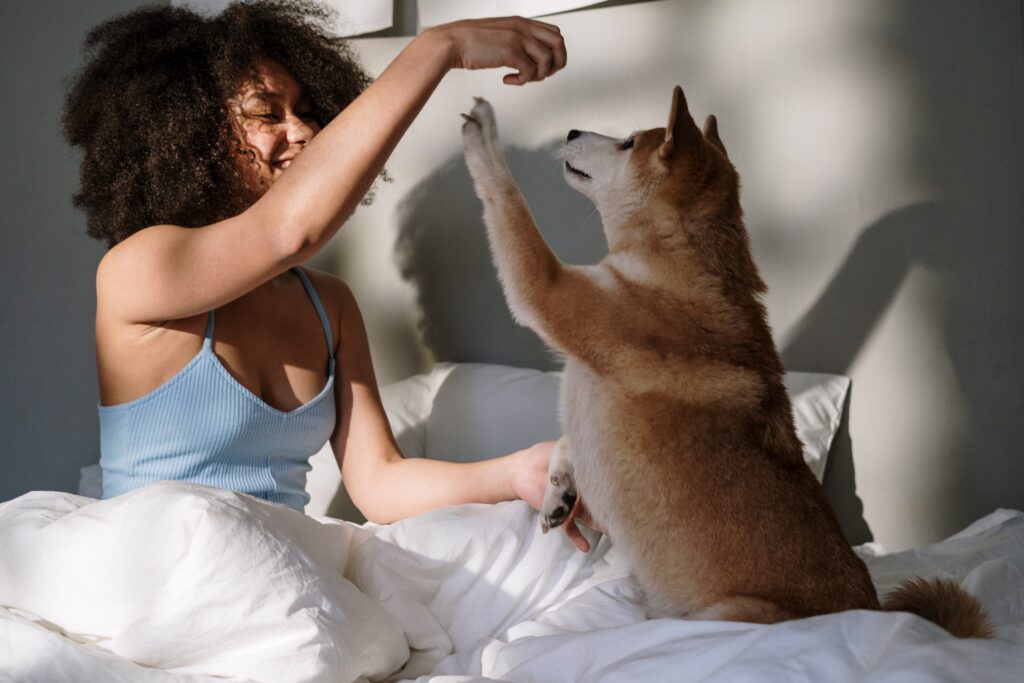
You’ve reached the end. High-five, pup parent!
Ultimately, there are countless ways to help your dog with separation anxiety. I have just touched on the methods that I, a trusted friend, and/or a professional have found success in using.
The most important advice is to seek assistance from your veterinarian if the separation anxiety is severe or getting worse. Your dog is your best friend, and you are his—that’s why he misses you so much in the first place! Do the right thing and take good care of your pal, and he’ll be around—and so much happier!—for many years to come.
Additional Sources for Canine Separation Anxiety:
Separation Anxiety – https://www.aspca.org/pet-care/dog-care/common-dog-behavior-issues/separation-anxiety
The Role of Serotonin in Dog Anxiety – https://www.horseandpethealth.com/pet-health/role-seratonin-dog-anxiety/
Side Effects of Anxiety Medications in Dogs – https://www.petmd.com/dog/conditions/neurological/c_dg_serotonin_syndrome
Separation Anxiety presentation by Dr Erica Hawker at Animal Behavior Science Conference 2019
More information on Daily and Situational behavior medications.

